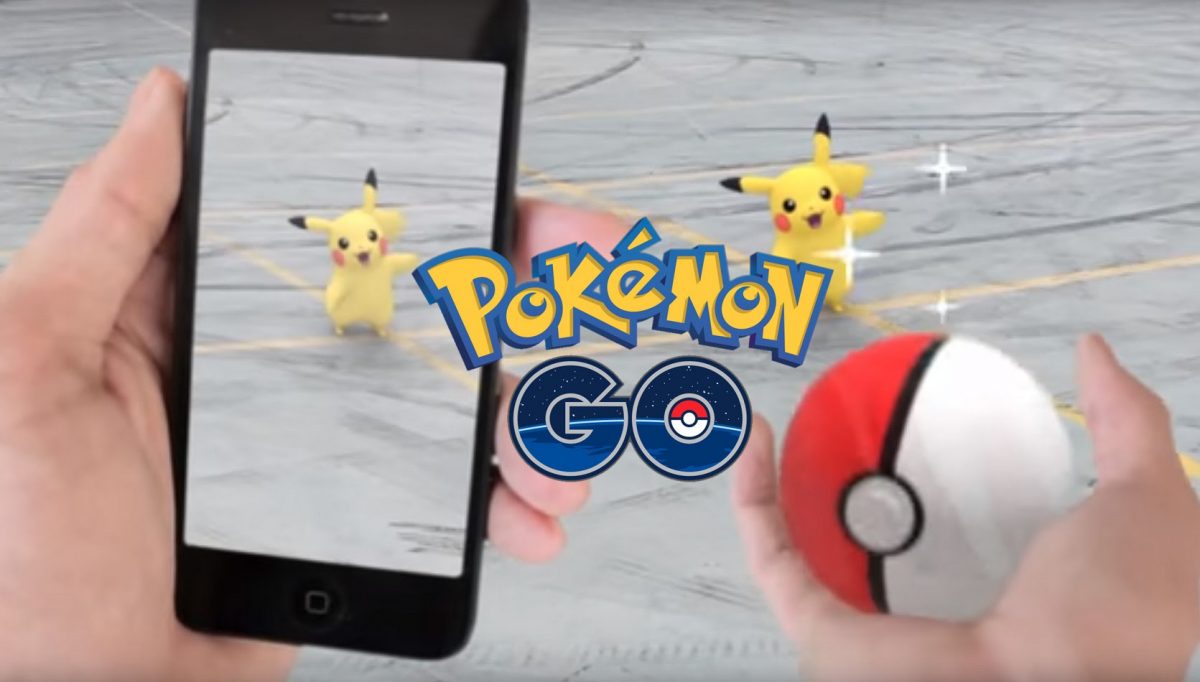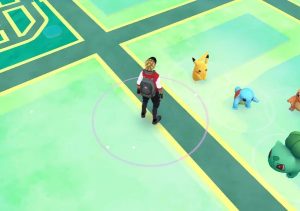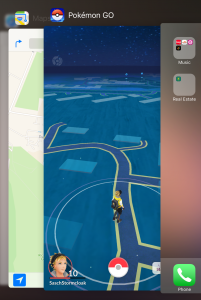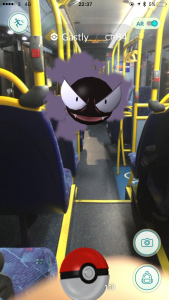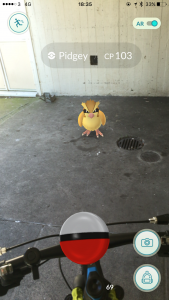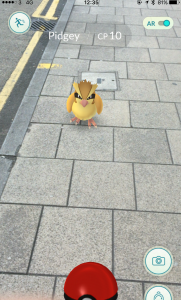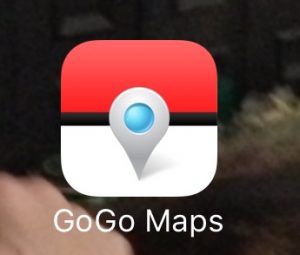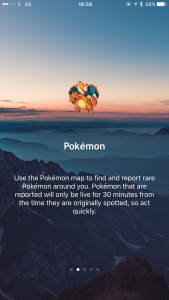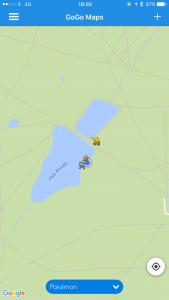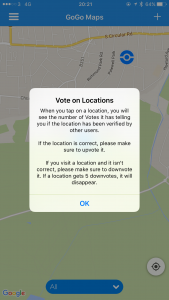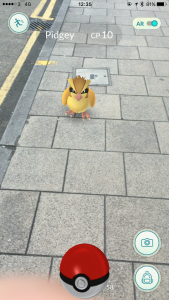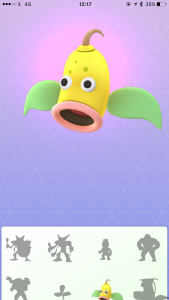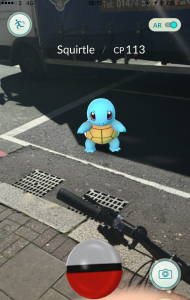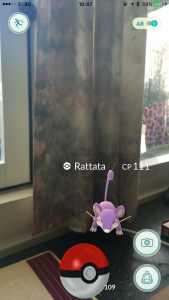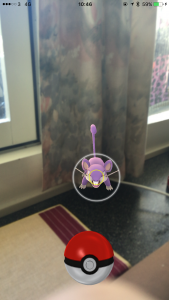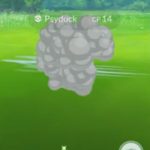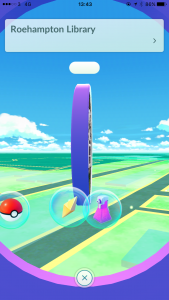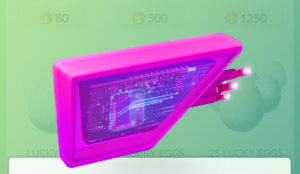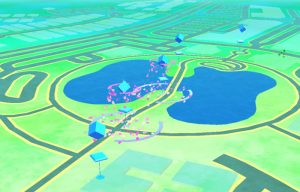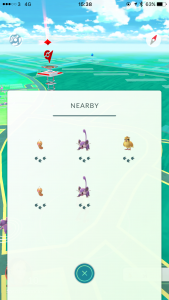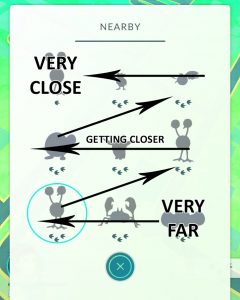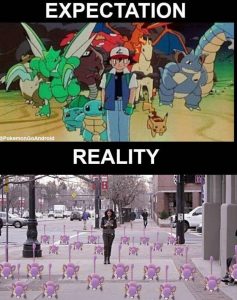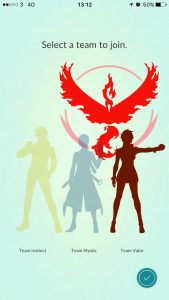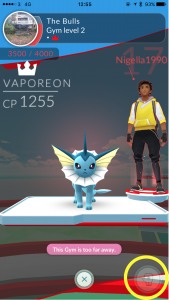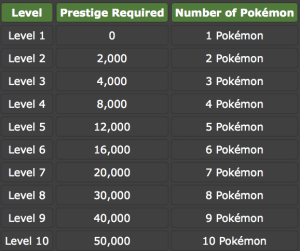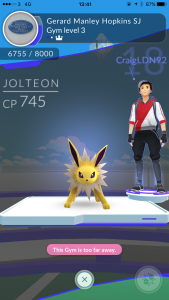I’ve been playing Pokémon GO fore a bit more than two weeks now, since the appearance of the unofficial APK and then since the official game launched. Today I bring you a compilation of concepts, tricks and tips telling you how to take the most advantage of the game’s elements.
Contents
- It is actually possible to get Pikachu as your starter Pokémon.
- Having Google Maps open in the background.
- Let’s go for a walk! … with the game open.
- Don’t waste your Pokeballs! Do recycling!
- When to invest in a Pokémon’s experience?
- GoGo Maps, a companion app for finding Pokémon!
- Secret trick: Evee’s three “EVEElutions”
- Legendary Pokémon. What’s up with them?
- Throwing a Pokeball and catching a higher level Pokémon actually requires some strategy.
- Taking advantage of PokeStops.
- Searching and tracking Pokémon. The “Nearby” system.
- Duplicate Pokémon, catch them or ignore them? Evolving duplicates.
- Gyms. Battles, teams and conquers.
1. It is actually possible to get Pikachu as our starter Pokémon
When we start the game for the first time we encounter the typical decision of choosing between Charmander, Bulbasaur and Squirtle. If we (literally) walk away to another location, the game will respawn the three Pokémon next to us. If we walk away up to three times, the fourth time the Pokémon respawn a Pikachu will appear next to the other three, waiting for us to choose it as our initial Pokémon.
2. Having Google Maps open on the background
That’s it, we’ve all experienced that frustrating “GPS signal not found” the game shows us every once in a while, and which usually leaves our character in the middle of nowhere either in a green field or blue ocean. Whenever this happens, open the Maps app and leave it open on the background. This seems to help the the game to better geo-locate ourselves, solving the annoying issue most of the time.
3. Let’s go for a walk! …with the game open
One of the reasons which have made the game so popular is the fact of playing in thermal world. In Pokemon GO we need to walk, a lot! It is called GO for a reason, isn’t it? This aspect is especially important at the time of incubating the Pokémon eggs we are given every once in a while. Each eggs requires being incubated for a specific amount of km; it is easy to guess that the more km an egg requires, the better the reward we’ll obtain when it finally hatches. Here, an important detail comes to scene: the game tracks our moves via GPS, not using a pedometer, so walking in circles in your living room won’t help you.
Driving around with buses, trains or cars won’t work either. Believe me, I’ve tried. The game seems to have some sort of speed limiter making the game stop counting the distance travelled when a certain speed is reached. Moreover, some Pokémon appeared on my screen while on the bus, but they vanished before I could even throw the a Pokeball because of the bus’s speed. What does seem to work is driving around with the bicycle, at least if we do so considerably slow. I cycled a bit around my block to make some tests and the counter seems to move if we don’t act as if in Le Tour de France.
On the other hand, the counters in the game won’t track if the game isn’t open and the phone unlocked. In theory the phone should vibrate and make sounds when there’s Pokémon nearby, even with the phone blocked.
All this is sort of problematic, and I really hope they’ll find a solution soon, at least for the incubating eggs part without having to walk around with our phones with the game open in our hands. Our batteries will thank us. Not to mention the server problems the game has been experiencing these days.
On the other hand, I guess the expected arrival of the Pokémon Go Plus bands will have something to do with all this.
4. Don’t waste your Pokeballs! Do recycling!
An apparently pretty obvious one… but not for me! Lol. Thanks to my buddy Chris for this one.
How’s your aim going? Those Zubat are so tricky to catch! There’s no need to waste those precious Pokeball: whenever you miss when throwing a Pokeball to a wild Pokémon, you can still recover that rolling ball by tapping on it. Hurry up before it disappears!
5. When to invest in a Pokémon’s experience?
A mistake I’ve learned to avoid by repeatedly committing the same error: don’t invest experience on the first “shitty” Pokémon you find. The reason is simple, the more we level up, the more powerful versions of that same Pokémon we’ll find in the wild, making us think of all that various stardust we wasted since we trained that 10 CP Pidgey, while we are now finding 110 CP or more Pidgeys out there.
6. GoGo Maps, a companion app for finding Pokémon!
GoGo Maps is a simple app based on the Maps app, in which we see other users’ record of nearby Gyms, PokeStops and spotted Pokémon. We can also cooperate with our own work: whenever we spot a type of Pokémon in our area, we simply “drop a pin” to let other know about our finding. Is it reliable? Well, sort of. The app has a voting system in which users are able to confirm or deny other users’ claims: 5 negative rates and that particular tag will be removed.
7. Secret trick: Evee’s three “EVEElutions”
This is a pretty good one, thanks to my bro Corey for sharing it!
We all know Evee’s three evolution states: Electric-Jolteon, Water-Vaporeon and Fire-Flareon. Whenever we evolve an Evee the result in one of the three states will be pretty random. So what if we already have, say, a Jolteon and a Vaporeon, and want to get the missing Flareon? There’s nothing guaranteeing us to get the one we want… or is there? This little trick allows us to FORCE Evee’s evolution into the one we want, by simply nicknaming it in different ways: Rainer for Vaporeon, Sparky for Jolteon and Pyro for Flareon. Don’t believe me? Check the video below:
8. Legendary Pokémon
Articuno, Moltres, Zapdos, Mew, MewTwo… what’s up with them? We can expect them to be in the game somehow; what would be a Pokémon game without legendary Pokémon, after all? We’ve seen that each one of the three teams in the gyms has one of the three legendary birds as their mascot, which leads me to think that gyms might have something to do with finding those bad boys.
Some guys couldn’t wait and have already been looking for clues within the game’s data. The result: the legendary Pokémon are there somehow, and they should appear at some point, one way or the other. Find a video about this below:
Moreover, Ingress, Niantic‘s last game already included several macro social events in which players had to visit specific locations in order to complete certain tasks in a sic fi adventure, so we can expect Pokémon GO to have similar events in the future.
In any case, the original trailer showed a lot of features which are not active yet in the game, so future updates might bring a lot more stuff on this end. Below is the original Pokémon GO trailer:
Now, lets hit on some more complex stuff:
9. Throwing a Pokeball and catching a higher level Pokémon actually requires some strategy.
At the beginning it might seem Niantic has simplified the game’s capture feature to stupidity levels, and that capturing Pokémon just depends on us trying to throw the Pokeballs more or less straight. However, soon enough we’ll discover how some Pokémon resist to being captured, especially once we start encountering higher level Pokémon.
You’ll have noticed how a ring appears surrounding the Pokémon whenever we throw a Pokeball at them. This circle tells us two things:
– The color of the ring indicates how difficult it is to catch that Pokémon. If the ring is green, catching it shouldn’t be a problem, but it will be somewhat difficult or much more difficult to catch if the ring appears yellow or red. These seems to be directly related to the level with which that wild Pokémon appears.
– The second element is the ring’s size, indicating the ideal moment in which to throw the Pokeball. According to the game’s FAQ, ideally we want to throw the Pokeball when the ring reaches its smallest possible size. Here comes the trick: if we hold our finger over the Pokeball instead of throwing it straight away, the ring will start to shrink. We now just need to throw the Pokeball whenever wi think the ring has become small enough.
Don’t let ’em escape!
While some Pokémon seem to enrage when we throw them a Pokeball, there’s also the risk that a wild Pokémon escapes after our first attempts of throwing a Pokeball at it; a little dust cloud appears indicating that the Pokémon escaped. There’s a simple way of avoiding this: every once in a while we’ll get Razz Berries at the PokeStops we visit, which we can throw at the Pokémon to avoid their escape.
10. Taking advantage of PokeStops
The game is based on Google Maps, so we can expect any minimally interesting corner in an area to have become a PokeStop. At this point, anyone nows that PokeStops are where we refill our supply of consumables; at the beginning we’ll just get Pokeballs and Pokémon Eggs. Once we reach level 5 we’ll get other objects, such as Revive, Potions and Super Potions, and Razz Berries. Essential objects in order to recover from our gym battles, which also activate after reaching level 5. Each PokeStop respawns after about 5 minutes, giving us the chance to “farm” our supplies easily every 5 minutes, for example, in those boring afternoons with our mom or girlfriend at the local supermarket, which for some unknown and mystical reason has been turned into a PokeStop.
Lure modules
PokeStops have one more important role. We can turn them into important catching points if we use a certain object in its area of effect:
If we activate one of these objects next to a PokeStop (which needs to be in our range) a counter while become active and wild Pokémon will be attracted to that PokeStop for 30minutes. This object is perfect if we now that we’ll remain in the same place for a good while (e.g. when waiting for our meal at a restaurant, or while waiting for our turn at the GP). Although we can get these objects through in-game purchases (with real money), we will hardly ever get them as a free object (I got a few upon levelling up), so I seriously recommend to use them with caution and whenever we are sure that we’ll stay close to the same PokeStop for a good while. The effect also benefits nearby players, which will also see increased the amount of Pokémon appearing close to that PokeStop.
This also means we’ll also benefit from other players’ Lure modules whenever they activate them on a nearby PokeStop; we just need to look for those PokeStops surrounded by “confeti”, meaning someone has activated a Lure module on that PokeStop.
11. Searching and tracking Pokémon. The “Nearby” system.
At the beginning, it might seem Pokémon appear just randomly in our screen with no apparent reason, but the truth is the system does indeed have its secrets, and paying attention to certain events happening on our screens might lead us to that new Pokémon that just appeared in our area.
After several days exploring the tracking system of “nearby Pokémon”, I bring you some info I managed to gather by looking for answers on the web for then trying them on my own. Although the system is not 100% accurate, I managed to work it out a few times, so I dare to say it works pretty well.
Pokémon nearby #1: the order in the list
The “nearby Pokémon” system basically shows us a list of Pokémon we might encounter if we follow a series of clues. Selecting a Pokémon from the list makes it appear with a number of footprints below it, indicating the relative closeness to our position.
– Generally, the less footprints, the closer we are to a Pokémon: 0 footprints indicates the Pokémon is just where we are, and it should appear now; 1 footprint indicates “very close”, 2 footprints indicate “quite close” and 3 footprints mean “close, somewhere here”. We find the problem at the 3 footprints situation, since the game gives no clue about where to start our search.
– Whenever we see 3 footprints, the order in which toa Pokémon appear in the list at the bottom right seems to be important. In this 3×3 grid, even when all Pokémon show 3 footprints, the Pokémon appearing at the top left corner is the one relatively closer to us, and the one with the higher chances of reducing the number of footprints it shows. The one at the bottom right of the list is the relatively farthest from us, and it could disappear if we keep walking away from “its area”.
– Therefore, in order to find a specific Pokémon in the list, we need to select it (which makes a circle appear around the Pokémon), but WITHOUT CLOSING THE LIST, since we still want to see how its position in the list varies while we move.
The idea is getting rid of those damn 3 footprints. Once we get only 2 footprints, we know we are in the correct area and that the Pokémon is quite close, some just need to keep moving until getting rid of all three footprints.
Pokémon nearby #2: the compass
Although I haven’t really tried this system, apparently it works formally people. A part from being compatible with the first method, this one seems to be more precise, so I think it’s a good idea to include it in this post. I’m talking about the “compass method“. You’ll have noticed the little compass on the top right of the screen. So it seems like if we select a Pokémon from the list and we then press the compass symbol, it will indicate the way towards our catch. If we follow its indications, in theory we’ll see how the number of footprints gradually reduces from 3 to 0, until the Pokémon finally appears.
Will the Pokémon in the “nearby” list show up if we use incense or Lure modules?
This point is not clear at all. I’ve used both in several occasions, and although the level of wild Pokémon does indeed increase quite notably, it is usually common Pokémon appearing on that area (such as Gastly close to a cemetery or Magikarp close to a river or lake), a part from generally common Pokémon anywhere in the game (Pidgey, Rattata, etc.). I managed to get some pretty pretty rare and powerful Pokémon using this objects (even a Squirtle), but they always appeared randomly and where not even on the “nearby” list.
Anyway, the game’s servers have been down quite a few times these last days, so we might see these issues happening quite a lot until they find a definitive solution.
12. Duplicate Pokémon, catch them or ignore them? Evolving duplicates.
After having been playing for a while, we’ll soon realise that rare Pokémon are just that… rare. During our searches for new Pokémon we will find hundreds of Pidgey and Rattata. Truth is, catching lots of Pokémon of the same type is exactly what we need in order to evolve one of them, the one we decide to keep, as well as to make it more powerful. Each type of Pokémon gives us a specific type of Pokémon candy, which we use to evolve and to make our Pokémon more powerful. Moreover, each time we catch a Pokémon we get 100 units of stardust, essential to increase our Pokémon’s CP (combat points).
On the other hand, what should we do with those repeated Pokémon once the one we kept reaches its maximum combat power? Keep capturing copies and evolving them is a good way of obtaining experience for levelling up our character, which will gets us some cool stuff (such as Lure modules, and so on). In my case, for example, I have a fully evolved, maximum powered Pidgeot. What should I do with my remaining 70 Pidgey candies? Taking those Pidgey duplicates and evolving them gives us a huge amount of experience, a good way of taking advantage of all that candies we though are not useful anymore. IMPORTANT: I’m talking about evolving them, not making them more powerful, since that is simply wasting our valued stardust power, which we can use to make our other Pokémon more powerful.
13. Gyms. Battles, teams and conquers
Ok, so we just arrived to the game’s most social component at this stage. Whoever has entered a gym for the first time will have noticed two things:
First, they’ll have been prompted to choose between one of the three battling teams available (Team Instinct-Zapdos, Team Mystic-Articuno or Team Valor-Moltres).
Second, they’ll almost certainly have experienced a brutal defeat in their first gym battle. Apart from being packed of people who seem to play 24 hours a day, the system is somewhat chaotic and confusing if you don’t know how it works.
A gym can be occupied by any of the three teams, the colours of the controlling team being displayed on top of it, or showing a grey-colored symbol if there’s no current occupant (meaning we can directly occupy it for our team without having to battle nobody). Given the game’s popularity it is very difficult to still find uninhabited gyms.
Gym battles
Although they might seem somewhat chaotic at first glance, battles are pretty simple. The first thing we’ll notice is that, a part from kicking our opponent’s ass by tapping on it, we can also dodge enemy attacks by swiping our Pokémon from side to side. What is not that evident is the fact that each Pokémon has a “special” bar, which slowly fills as we attack our enemy. Once full, we can launch a devastating attack by holding our finger over the enemy Pokémon. The system is still somewhat chaotic, but some of these special moves cause brutal damage, and are definitely the key towards defeating our opponent.
Of course, the CP (combat points) level of ourPokémon is also a key factor, so “training it” and levelling it up by using candies and stardust is essential in order to make it more powerful. Although not as evident, the type of our Pokémon is also important; a water Pokémon will be very effective against a fire Pokémon, a fire one will be very effective against the plant or ice types, and so on.
Below is a video explaining gym battles in more detail:
The three teams and how to conquer a gym occupied by another team
Just as we level up our character, gyms essentially also “level up”, although not permanently. A gym’s level is measured according to its prestige level. When a gym belongs to our team, we can assign one of our Pokémon to it to increase its battle power. We can also “fight” with other team member’s Pokémon in order to increase our gym’s prestige.
The following table shows a gym’s different features once it reaches each prestige level:
So an enemy gym’s prestige level indicates the quantity of Pokémon we’ll have to battle. Normally, if the gym’s prestige level is high, we’ll have to defeat it several times in order to conquer the gym for our team. More concretely, we’ll conquer the gym once its prestige level reaches 0.
And we finally reached the end of this first post about Pokémon GO. Stay tuned to possible updates, as I’ll post them here as soon as I discover more tricks and helpful tips.
I leave you now with a list of articles which helped me in my “pursue of the mighty Truth”:
Forbes – 10 things I wish I’d known
Pedestrian – Hot kick ass tips

